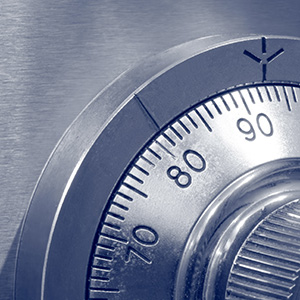
With burglaries of jewelers’ safes increasing in recent months, store owners should take proper precautions to keep their stores secure over the Thanksgiving holiday, Jewelers’ Security Alliance (JSA) president John Kennedy says.
“Historically we’ve seen safe burglaries over Thanksgiving,” he says. “Owners are a little less vigilant. Sometimes there’s less police.”
He notes in recent months there have been several big-money burglaries of safes in jewelry stores, including notable thefts in Plano, Texas; Island Park, N.Y.; and Vernon, Conn.
“It’s all over the country,” he says. “In some cases, we are seeing significant dollar losses.”
Sometimes the burglars enter from a neighboring store—which is easier in the COVID-19 era, since so many stores have closed.
He notes that, when America went into COVID lockdown early this year, crime came to a virtual halt. But lately, burglaries in particular have risen.
The JSA gives the following tips to avoid getting hit this holiday:
– Jewelers should confirm with their alarm company that their system protects their roof, sidewalls, and other possible points of entry. They also should ensure they have protection for their doors, windows, and safes, including motion and vibration sensors.
– All jewelry stores and companies should periodically test their alarm systems.
– If they’re located next door to an empty or unprotected property, jewelers should consider installing steel plates or mesh wire on shared walls to make entry more difficult.
– Retailers should have someone on duty who can respond to alarms, even on holidays.
– If an alarm does goes off, that designated person should not enter the jewelry store alone, but rather should be accompanied by police.
– When responding to alarms, jewelers and police should examine not just all ground floor doors and windows, but their roofs, sidewalls, and other possible points of entry as well.
– Jewelers should regularly examine their electrical junction boxes, since some burglars cut or disconnect electrical systems to disable alarm systems and cameras.
– Jewelers shouldn’t position safes on outside walls or along the walls of a neighboring office or store. Such placement could allow burglars to break through a wall and penetrate a safe without having to enter the store.
– A lot of safes—especially those rated TL-15×6 and TL-30×6—don’t provide adequate protection, JSA says; burglars can break into them with cutting devices they can buy at home improvement stores like Home Depot. By contrast, JSA reports it has never seen a break-in of a safe rated TRTL 30×6.
– Burglars sometimes remove camera surveillance equipment when leaving the store. For that reason, it’s best to have any surveillance images stored in the cloud or off-site in addition to on the premises.
– Jewelers shouldn’t leave merchandise out at night in showcase, as that’s a magnet for burglars. If not everything can fit in the safe, lock low-end merchandise in a drawer.
– Don’t cover showcases with cloth or other material when the store is closed. It’s better for burglars to see empty showcases than covered ones.
– Keep interior lighting on when the store’s closed, assuming that all merchandise has been put away. Not only will possible burglars see that cases are empty (again, assuming that they are), but police and passersby will be better able to spot intruders.
– Make sure the store’s inventory is up-to-date. Don’t keep your diamond grading reports in the same safe as your diamonds.
– Generally, burglars will case jewelry stores in the days and weeks before they hit them. Retailers should note any possibly fishy activity, and record details (such as license plates) in a suspicious incident book. Report any activity that raises warning bells to police and request extra patrols at your store.
More tips are available at the JSA website.
(Image credit: Getty)
- Subscribe to the JCK News Daily
- Subscribe to the JCK Special Report
- Follow JCK on Instagram: @jckmagazine
- Follow JCK on X: @jckmagazine
- Follow JCK on Facebook: @jckmagazine